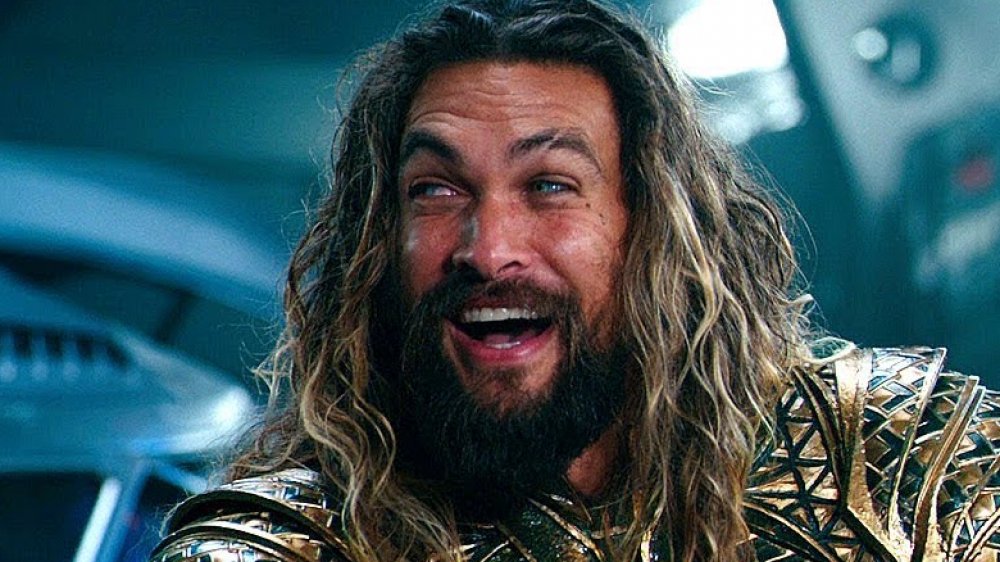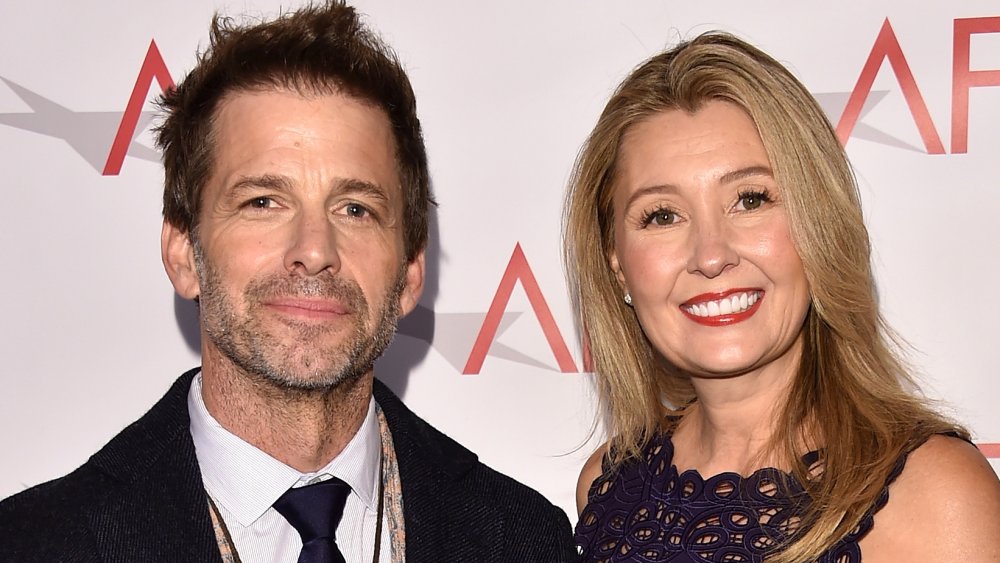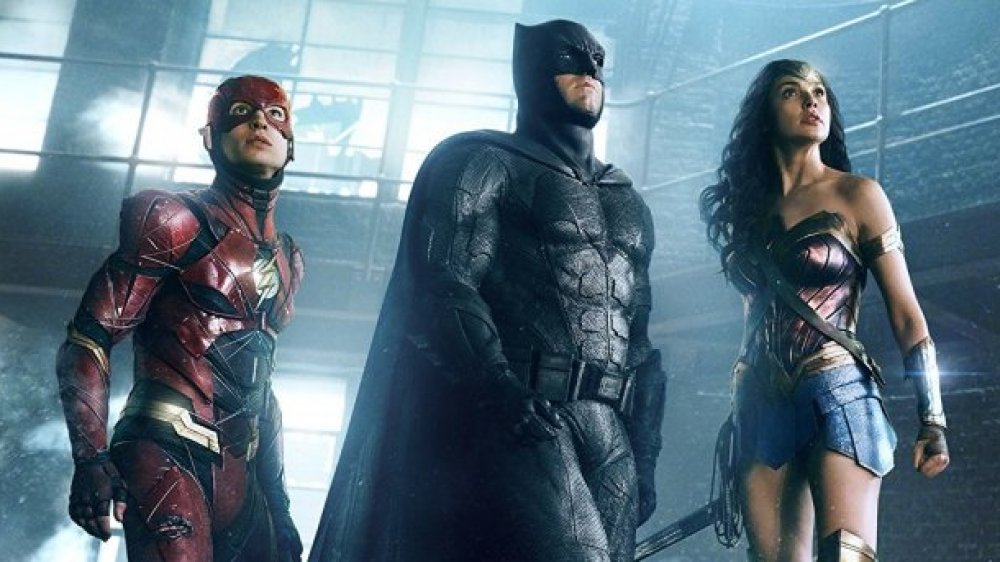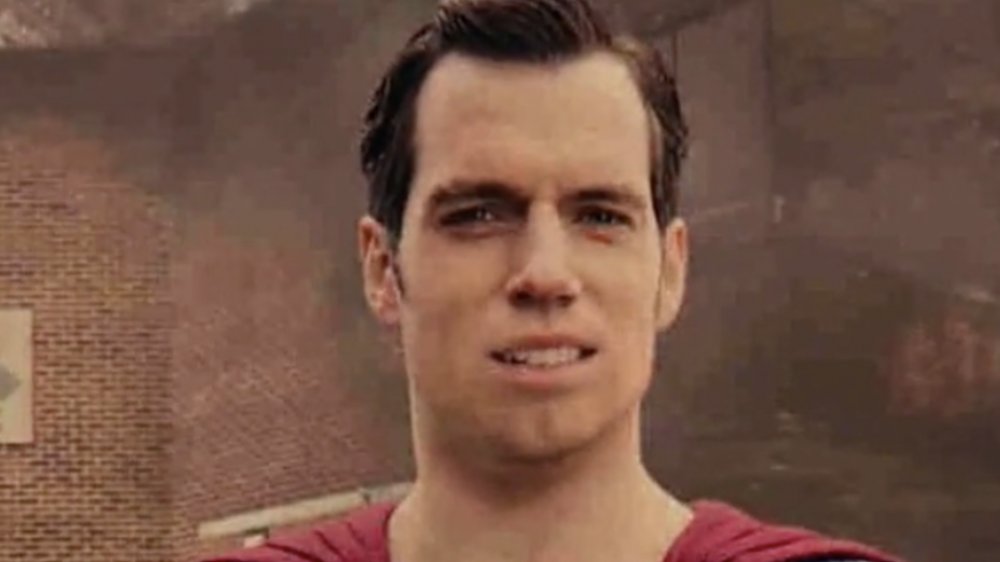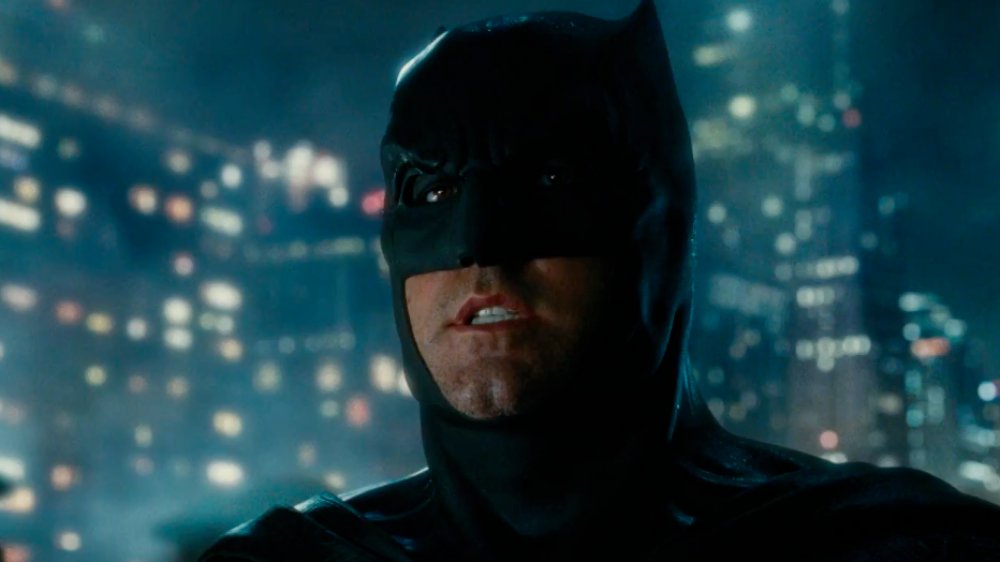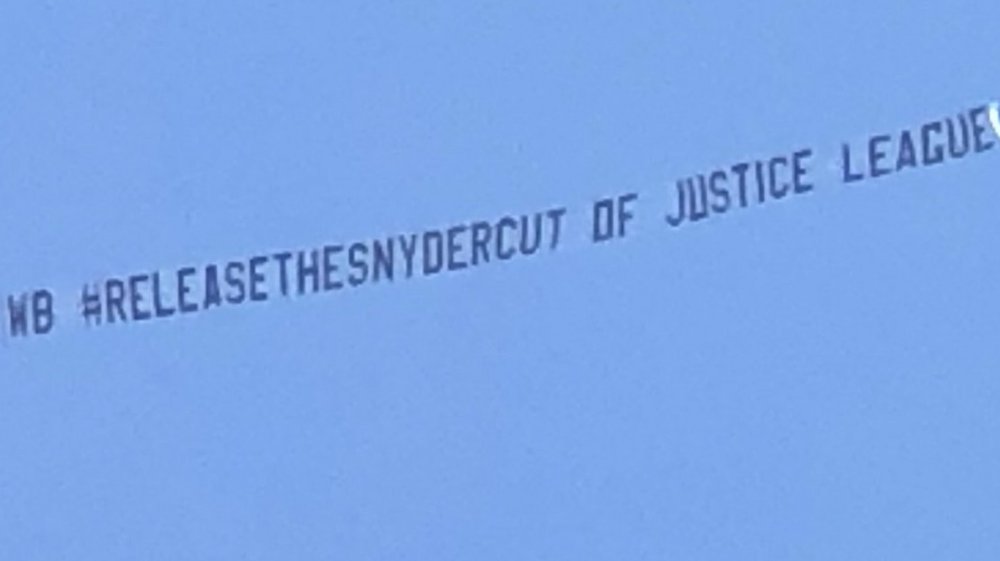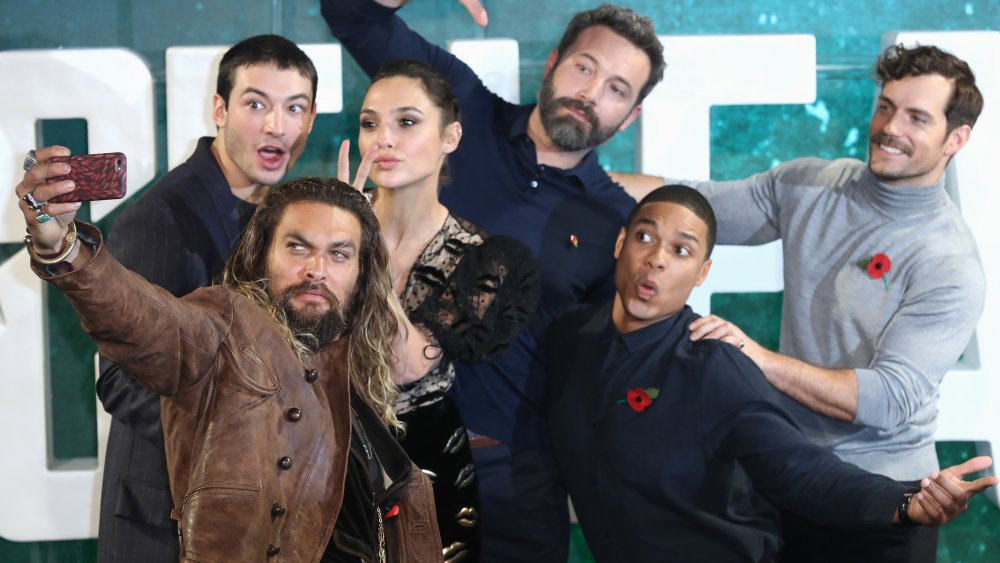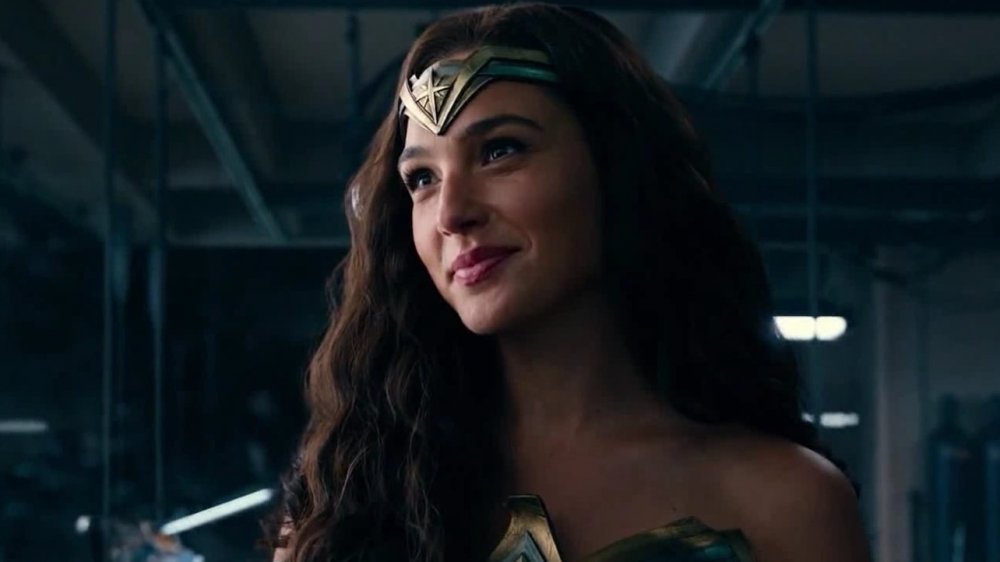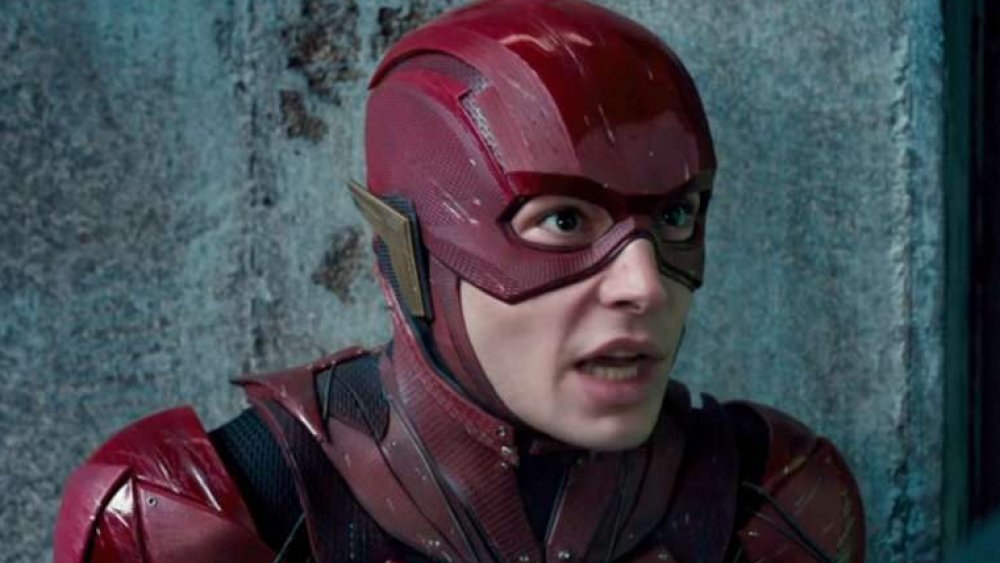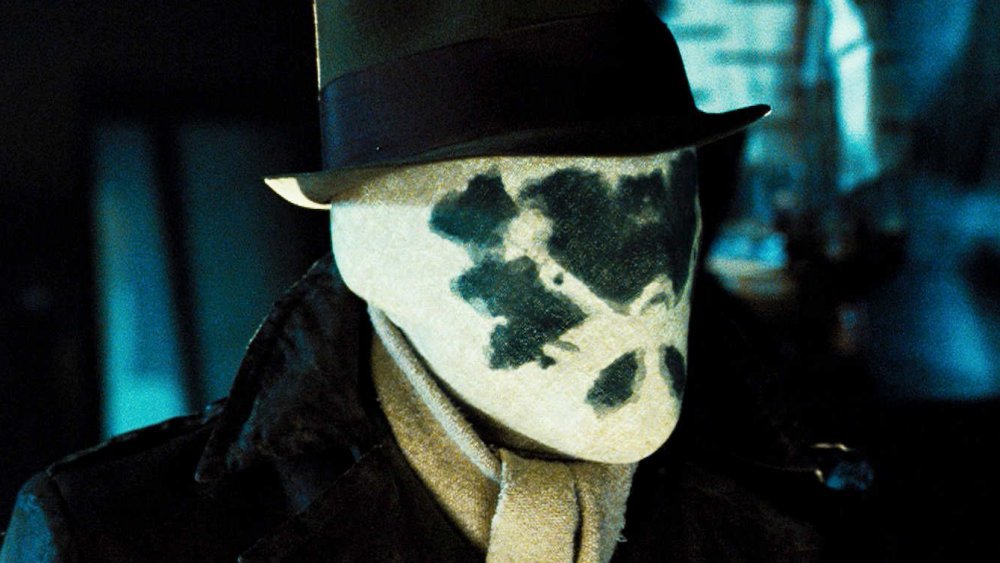The Untold Truth Of The Zack Snyder Director's Cut Of Justice League
After their theatrical release comes and goes, so many movies offer up deleted scenes or an "unrated" or "director's cut" on video with a handful of extra scenes. Film fans are often left wondering what could've been — how the movie might have been received with that other material, or even if there's more lost footage out there. The 2017 superhero squad movie Justice League is a case in point: The idea of a mythical cut shepherded by original director Zack Snyder existed in fans' imaginations for more than two years following the film's theatrical release.
The making of the film was a difficult and prolonged affair, and at one point, director Snyder stepped away and allowed Joss Whedon to finish the film. That shocking move, along with a lot of other clues, suggested that there was an alternative to the two-hour, middlingly-received theatrical cut: a three-hour "Snyder Cut" that more closely adhered to his initial ideas. This other, possibly better Justice League reached almost legendary status, but now we know it's real. Here's everything there is to know about the most famous movie never made... until the studio decided it was finally getting made.
Why Zack Snyder left Justice League
According to The Hollywood Reporter, Justice League went on a two-week hiatus in March 2017 so director Zack Snyder could address a family matter. In May, the tragic reason for the break was revealed: Autumn Snyder, the 20-year-old daughter of Zack Snyder and Justice League producer Deborah Snyder, had died by suicide. By that time, Justice League was in the middle of a rigorous post-production schedule in order to meet a release date of November 17, but the Snyders announced that they were stepping away from the film permanently, to grieve and heal.
The decision to walk away came after Snyder screened a rough cut — which is likely the origin of any "Snyder Cut" rumors — and then decided it needed some additional scenes. He hired screenwriter and director Joss Whedon — best known for creating Buffy the Vampire Slayer and directing the first two Avengers films — to write them. As he was about to head to England to shoot the new material, Snyder realized he and his family were still too emotionally tender to be separated.
Was Zack Snyder fired?
Warner Bros. probably didn't push Zack Snyder to let go of Justice League. A director leaving an expensive blockbuster in the middle of post-production and potentially destabilizing the whole operation six months before it's supposed to be in theaters isn't something any studio wants to deal with. According to The Hollywood Reporter, when Snyder announced his plans to step down from the film, studio executives offered to push back the Justice League release date so the Snyders could complete the movie when they were ready. They declined the offer, and the reshoots commenced with Joss Whedon at the helm. But rumors persist that Warner Bros. actually dismissed Snyder in early 2017 — before he suffered a family tragedy, but after executives saw his rough cut of Justice League.
According to Collider, when entertainment reporter Josh Dickey moved on from his beat in February 2018, he decided to reveal lots of movie industry secrets. "Here's a hot one for ya: Zack Snyder was fired from the DCEU just over 1 year ago," he tweeted. (Collider's Matt Goldberg corroborated Dickey's story, saying he'd heard similar information in 2017.) A few anonymous sources claimed that WB brass found Snyder's cut of the movie "unwatchable," and also that they'd grown weary of working with the director. The Wrap reported that the studio wasn't happy with him after the lackluster reception for Batman v Superman.
Did The Snyder Cut always exist?
After Zack Snyder left the movie — and gave up control — Joss Whedon got around $25 million to shoot a lot of new material (more than double the usual amount shelled out for reshoots), and then oversaw the theatrical release of Justice League, which the studio mandated run two hours or less. All that considered, there just has to be a wealth of unseen footage — perhaps even in addition to what was seen when Snyder screened a cut in early 2017.
In December 2019, the director confirmed that some kind of Snyder Cut existed, posting to Vero (via Newsweek) an image of film canisters labeled "ZS JL Director's Cut, Running Time 214." Decoded, that's "Zack Snyder, Justice League Director's Cut, Running Time 214 minutes." That's a three hour and 34 minute movie, well over Warner's two-hour demand. Electronic musician Junkie XL told ScreenRant in 2019 that he completed a score for this extra-long, Snyder-approved version.
But is a "Snyder Cut" much ado about nothing, a glorified "extended edition" DVD-type thing? Warner Bros. producer Charles Roven told the Washington Times that the math doesn't allow for extensive changes between Snyder's vision and Whedon's end product. "Let's just say 80, 85 percent of the movie is what was originally shot," Roven said. There's only so much you can do with the other 15, 20 percent of the movie."
Found footage festival
It's a matter of record, then, that Zack Snyder shot a lot of footage, and Joss Whedon shot... not as much footage. But lots of material — and seemingly abandoned plots — possibly removed from Snyder's take on Justice League surfaced in various ways. An early teaser for Aquaman, released to Twitter by Snyder in 2015, carried the tagline "Unite the Seven," implying that this movie would make Aquaman the seventh and final member of the Justice League, meaning that another hero would've been at least alluded to in a Justice League film — Green Lantern or Martian Manhunter, perhaps. Some trailers for Justice League introduced characters that didn't even show up in the finished film, including General Antiope (Robin Wright), Vulko (Willem Dafoe) and Iris West (Kiersey Clemons).
One big clue into how much Superman content was overseen by Whedon (and not Snyder) is the state of actor Henry Cavill's face from scene to scene in the theatrical version. When he got called in for reshoots, he'd grown a mustache for his role in Mission Impossible: Fallout, which he was contractually barred from shaving. Justice League effects wizards had to digitally remove the facial hair. But that technology hadn't exactly been perfected, leaving Superman with a slightly but noticeably discolored upper lip in some scenes.
It was all supposed to be part of the plan
DC Comics' Justice League was the publisher's equivalent of rival Marvel's The Avengers — an all-star supergroup of its most popular heroes to take on forces of great evil and consequence. The Justice League originally had seven members: Superman, Batman, Wonder Woman, the Flash, Aquaman, Green Lantern, and Martian Manhunter; when the series was rebooted in print in the 2000s, Cyborg replaced Martian Manhunter.
As Disney-produced Marvel movies like Iron Man and Thor introduced the affiliates of the Avengers, setting up for The Avengers and a broader, extremely successful Marvel Cinematic Universe, Warner Bros. wanted its own franchise and set up the DC Extended Universe, built around the Justice League. The project launched in 2013 with Man of Steel, starring Henry Cavill as Superman and Batman v Superman: Dawn of Justice, featuring Ben Affleck as the Dark Knight. Franchise overseer and director Zack Snyder initially had a working plan of six core movies: Man of Steel, Batman v Superman, then Justice League, then another Superman movie, and finally, two Justice League movies. According to market researcher Neil Daly, who worked with Warner Bros. on the Justice League films, Snyder wanted to make the films primarily the story of Superman, portraying him as an unsure hero who finally accepts his destiny and joins the Justice League. That likely means there's a lot more Superman content in any Snyder cut of Justice League.
The fans really wanted the Snyder Cut
Partly because neither critics nor big DC fans especially cared for Justice League, and partly because the public knew all about the film's extraordinarily troubled production history, the legend of the Snyder Cut grew in the years after the film hit theaters in November 2017. In 2019, Snyder Cut-demanding fans pooled $1,170 to hire a plane to fly over San Diego Comic-Con, trailing a banner that read "WB #ReleasetheSnyderCut of Justice League" over the event. On November 17, 2019 — the two-year anniversary of Justice League's unveiling — the #ReleaseThe SnyderCut movement (and social media trending topic) launched. On that first day, more than 400,000 people called on Warner Bros. to release a cut of the film that it wouldn't even confirm existed in its entirety. In fact, Warner representatives wouldn't comment on any plans for re-releasing Justice League at all, either to the public or within the film industry. "I haven't heard one word about releasing that cut," Exhibitor Relations box office analyst Jeff Bock told CNBC. As early as 2018, a Warner representative told the Wall Street Journal that the company had no plans to release a different version of Justice League.
The cast really wanted the Snyder Cut
Surprisingly publicly defiant in the face of Warner Bros.' indifference, members of the Justice League cast have repeatedly spoken out about the Snyder Cut — its existence, its quality, and whether it should be released. When #ReleaseTheSnyderCut became a trending topic and rallying cry on social media in 2019, Gal Gadot certainly put some pressure on Warner Bros. executives. In November 2019, she tweeted a picture of herself captioned "#ReleaseTheSnyderCut." Ben Affleck followed suit, and so did D.C.E.U actor Joe Manganiello, using the hashtag alongside an Instagram picture of himself in his Deathstroke costume. Ray Fisher (Cyborg) took a similar tack (but later deleted the tweet).
And then there's Jason Momoa, a.k.a. Aquaman, who claims to have actually seen some print of the director's original vision. "I've seen the Snyder Cut," he told MTV News. "I think the public needs to see it. I'm obviously indebted to Warners and DC. I don't know how they feel about it, but as a fan, I'm very, very happy that I got to see it." Henry Cavill (Superman), however, claims not to know what anybody is talking about. During a press tour for The Witcher in December 2019, he told a reporter, "I have not seen any Snyder Cut. I don't know if there is anything that exists that is a Snyder Cut. I'm sure there is footage out there which has probably been pieced together over the years."
It's actually coming out
In a victory for hardcore, vocal fans everywhere — if not the unique ability of the internet and social media to tell content makers what the audience really wants — the Snyder Cut of Justice League (or at least a Zack Snyder-organized version of Justice League) will finally be seen by the public, years after the original film's release. During a Vero-based watch party for Man of Steel on May 20, 2020, Snyder confirmed that his cut will be available on the streaming platform HBO Max. DC Comics films are produced by corporate parent Warner Bros., also the controlling party of HBO, and the Snyder Cut will be one of the streamer's signature original productions when it debuts on HBO Max sometime in 2021.
This isn't a mere recut or edit of the Justice League seen in movie theaters. "It will be an entirely new thing, and, especially talking to those who have seen the released movie, a new experience apart from that movie," Snyder told The Hollywood Reporter. If anything, it will have a much longer running time than that other Justice League — in fact, it may not even be a movie. There's speculation it might take the form of an almost-four-hour-long single film, or be broken up into TV episode-style installments, like a miniseries.
It's real but it's not ready
If any Snyder Cut of Justice League ever did exist, it was definitely a work print, or a rough cut, with missing effects, incomplete and various other holes that prevent it from an initial release. "It was a movie that people in production could watch and fill in the blanks," filmmaker (and comics media lover Kevin Smith) said on the Reel Blend podcast." It was certainly not meant for mass consumption."
That would explain why it's not hitting HBO Max until 2021. Just after the announcement that some form of the Snyder version of the film would eventually make it to the streaming platform, The Hollywood Reporter noted that the filmmaker has a lot of work ahead of him. He's rehiring the original Justice League post-production staff to get the Snyder Cut into releasable shape, which means a lot of editing and special effects rendering. There's also speculation Snyder will have to bring back the film's superhero cast — Henry Cavill, Ben Affleck, Gal Gadot, and such — to record new dialogue for unfinished sequences. If anything, the newly produced material will be expensive if not voluminous: Warners has earmarked somewhere between $20 million and $30 million to finish the movie that so many thought was already finished.
It's Superman II and Watchmen all over again
The saga of Justice League, with its changing directors and supposed multiple versions, is amazingly not even an original or unique story. It isn't even the first time Warner Bros. has given in to fan demand to release a supposedly superior cut of a superhero movie — nor is it the first time the studio released a film based on a DC Comics character directed by Zack Snyder with which he wasn't 100 percent on board.
Richard Donner directed the original Superman film from 1978, and signed on to make Superman II, only to be replaced during production by Richard Lester, who made the film that he wanted to make. After more than 20 years of increasingly vocal fan demands, Warner released a "Donner Cut" to home video in 2005. After numerous attempts to bring Alan Moore and Dave Gibbons' sprawling and challenging Watchmen comic series from 1986-'87 to the big screen, a movie hit theaters in 2009, helmed by Snyder, deemed the right guy after writing and directing the based-on-a-comic 300. Watchmen was big and unwieldy, and cuts had to be made, such as eliminating the animated sequences of "Tales of the Black Freighter," an in-universe pirate story from the comics. Warner eventually released to DVD two more cuts of the already 163-minute long film: a 187-minute "Director's Cut" and the 215-minute "Ultimate Cut."
